I was recently asked on a podcast what successful personal branding looks like and it stopped me in my tracks. The truth is, I wasn’t sure how to answer and I eventually admitted I don’t think I’m a success story by any means. And that surprises people.
My key to all of this personal brand building on LinkedIn comes down to my own willingness to be authentic and vulnerable. I open up and share my stories because as a writer, it has always been my goal to build a community and provide validation and reassurance to my readers that they aren’t alone. And as a marketer, I know how to speak to an audience. All of this is storytelling.
See more:
- 3 Steps To Build Your Personal Brand On LinkedIn
- What It Means To Build A Personal Brand On LinkedIn
- Who Uses LinkedIn To Build A Personal Brand?
- Why Should I Build A Personal Brand On LinkedIn?
- Best Formula For LinkedIn Posts
- 6 Things To Avoid Doing On LinkedIn
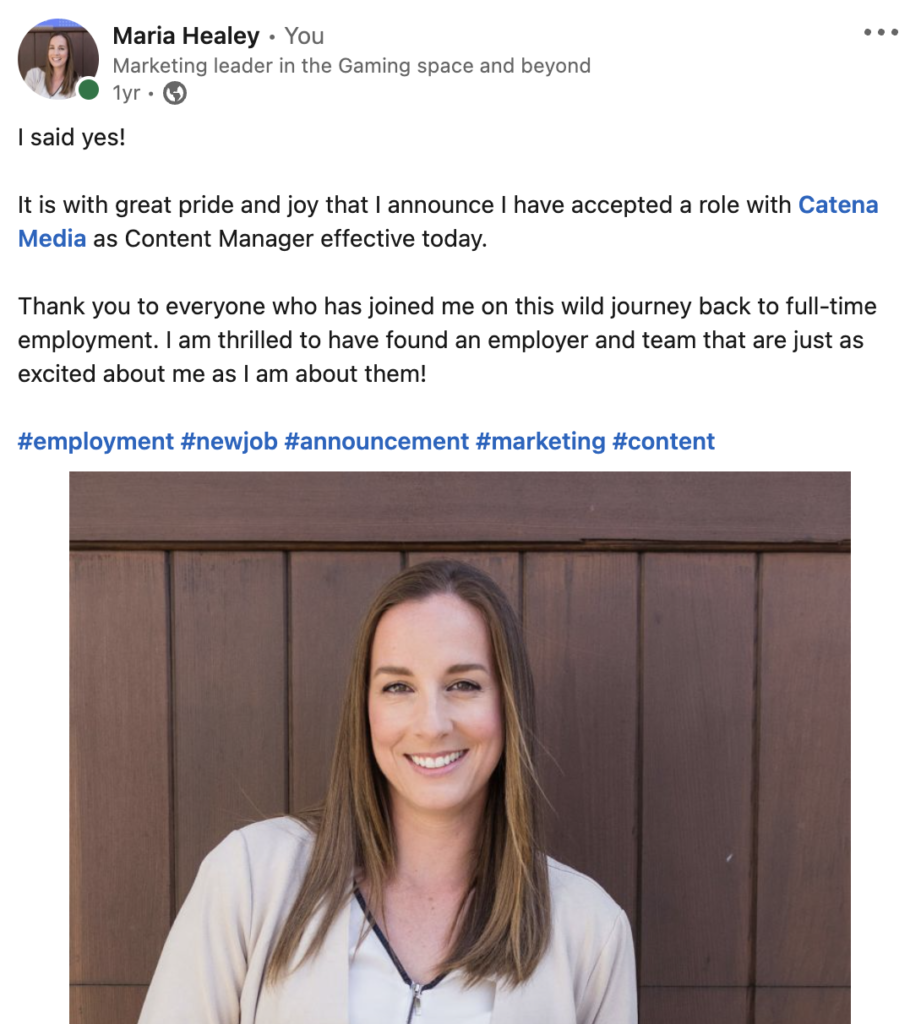
How to be a better storyteller
When asked on the podcast what building your personal brand means, I simply said it’s telling the stories about ourselves that resonate with others. Check out the other articles in my series about building your personal brand on LinkedIn for more details and easy to use tips. The best way to become a better storyteller is by practicing. It’s not easy to be vulnerable and show up with authenticity at all times, but it’s necessary in order to build community and authority in your space.
The best formula for writing a LinkedIn post is pretty simple. Think of it in the same way that you like to take in information. When you find a headline from a news article on your phone that captures your attention, think about how it’s formatted and how that keeps your attention. We’re going to duplicate that format for successful LinkedIn posts.
Formula for writing a LinkedIn post:
- Headline – Start with a bold statement that keeps the reader wanting more. Consider using numbers or something potentially controversial or outlandish. Catch their attention quick!
- White Space Throughout – Rather than using full paragraphs to tell your story, chunk things up into small, easily digestible pieces. After each group of text, space down to a new line twice so there is some white space between the statements. This makes it easier for the reader to go on with small bits of text and it will keep them scrolling.
- Conversational Tone – Avoid jargon and keep the tone conversational. This might seem really unnecessary but write as if a middle schooler could read it. Don’t be childish but definitely don’t go above your reader’s head either.
- Lists – Provide a bulleted list of short statements rather than a long series of words and commas in a single sentence. This is easier to read and keeps the eyes scrolling down quickly.
- Takeaway – Always offer something of value. Don’t simply post for the sake of posting. Share helpful tips or insights with LinkedIn users. Bring something to the conversation that they can take away with them. Help them remember what you want to share.
- Call To Action (CTA) – Close out your post with a CTA or question to encourage engagement. It can be as simple as asking for suggestions or opinions if you’ve shared something controversial.
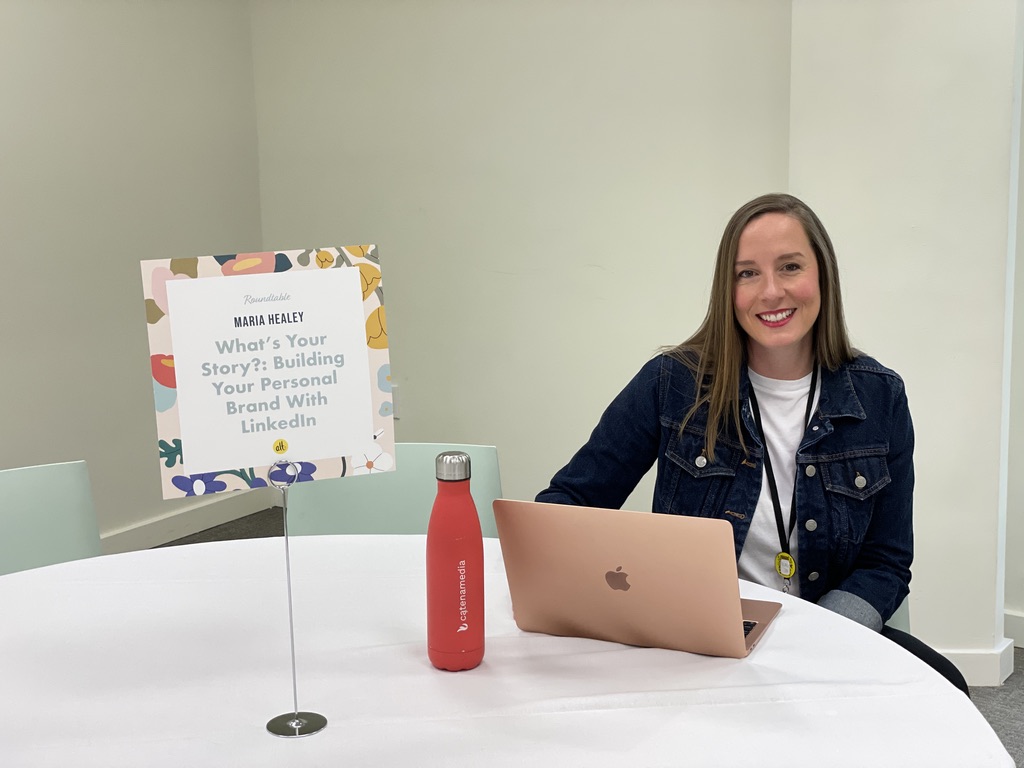
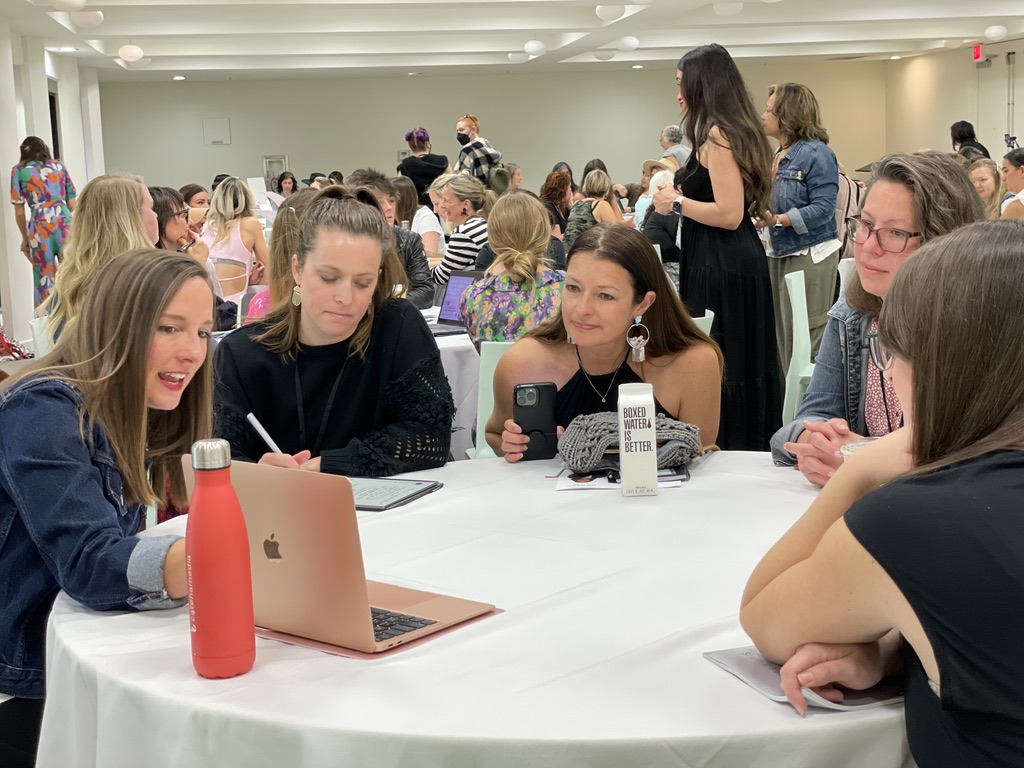
Creative entrepreneurs on LinkedIn?
Last week I had the unique opportunity to host a roundtable discussion at Alt Summit. I helped several creative entrepreneurs learn how to build their personal brand on LinkedIn. As expected, every single one of these ladies were skeptical about using LinkedIn for their business. They couldn’t understand why it was an important missing piece until we sat down together and I showed them how easy it was to find the Marketing Director at Glossier and who worked at Spoonflower. Wouldn’t it be amazing if you could use TikTok or Instagram to find out who runs the influencer or UGC program for the companies you want to work with? It’s not possible, but LinkedIn provides all those details.
In preparation for this roundtable topic, I worked closely with my dear friend Eunice Brownlee to help me focus on what was going to matter most to Alt attendees. Knowing that the majority of them were mothers and small business owners, I pulled together a few stories of my own that would resonate with them best. There were executive coaches and sustainability experts and handmade artisans among the group. Despite their entrepreneurship path, I convinced them they belong on LinkedIn and encouraged all of them to start with sharing their founder story.
Personal branding for all
When you own a colorful company, LinkedIn might seem like a big red flag full of stuffy suites and jobseekers. But it’s so much more than that. Partially thanks to the pandemic, LinkedIn changed with the times and became a more culturally diverse place to share what’s going on with our lives in and out of the office setting. It became a place where we collectively shared the struggles we experienced with finding or maintaining that elusive work-life balance after a complete shutdown of our world.
And it’s important that we had these hard conversations right in front of CEOs and executives and decision-makers who might not have the same lived experiences. We created allies in authentically opening up and sharing our stories.
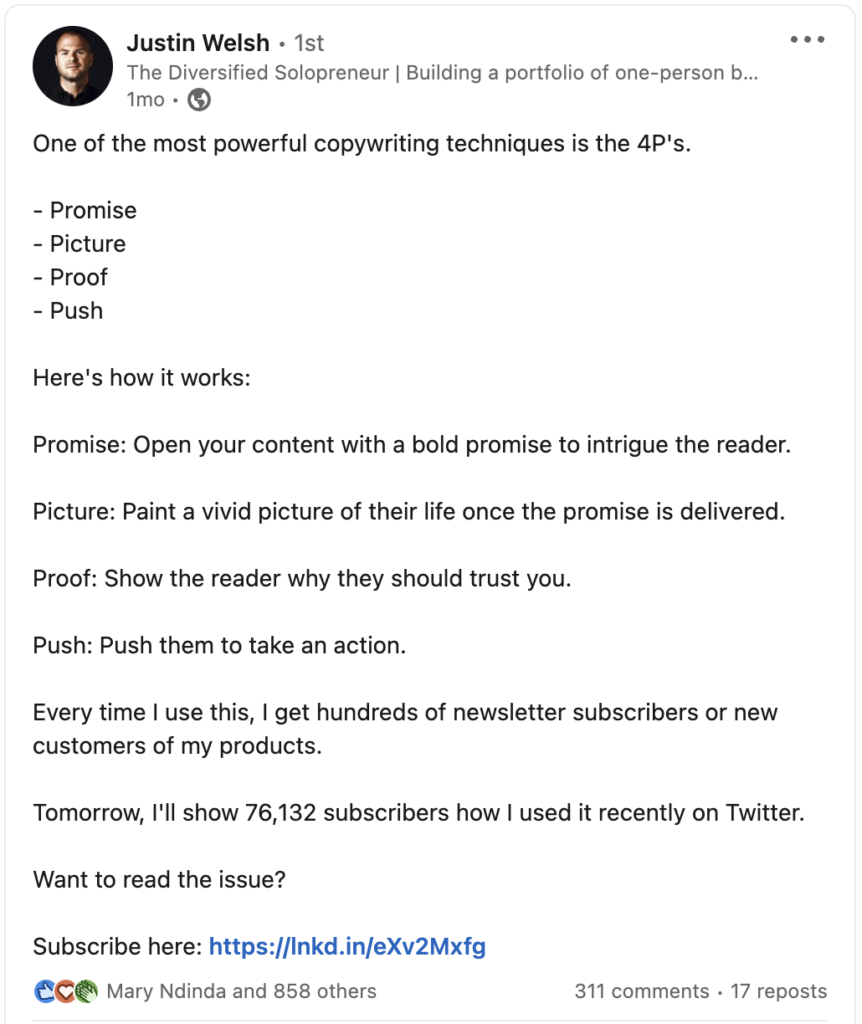
LinkedIn isn’t like other social networks (and it is…)
Much like any other social network, there are tons of LinkedInfluencers out there (just like Justin Welsh above). And that can be pretty intimidating when someone who seems to know what they’re doing is telling you how to use the platform. There have been plenty of days when I wanted to give up and throw in the towel on every social media channel out there. I continue to stick with LinkedIn though because it’s different.
At LinkedIn, the common theme in conversation revolves around work. But it’s also about how work fits into the rest of our lives. It’s a place where moms have spoken up about just how broken the childcare system is. Leaders use it to be a positive example of workplace culture. In the past year, more women have used it to open up the conversation around salary transparency. And wow, is that eye-opening!
Justin’s example above follows the formula for LinkedIn posts exceptionally well. He opens with a strong statement, uses plenty of white space and bullet points for lists, and he even ends with a CTA to subscribe to his newsletter.
Ready to dive in and start building your own personal brand on LinkedIn? Let’s chat.
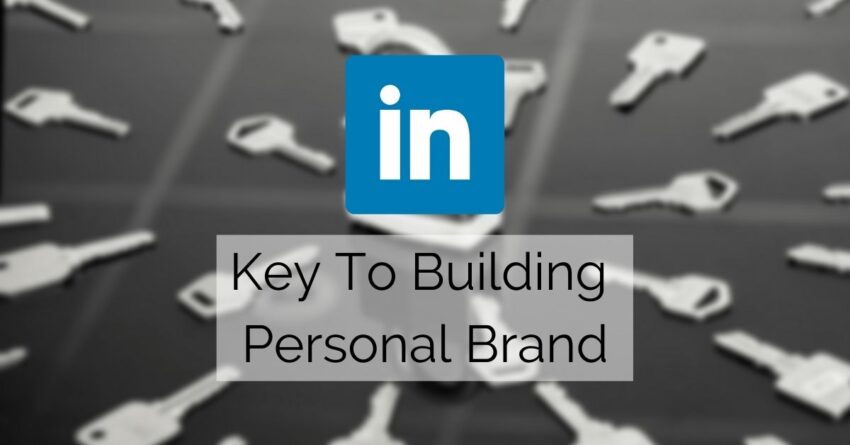
5 thoughts on “Key To Building A Valuable Personal Brand On LinkedIn”